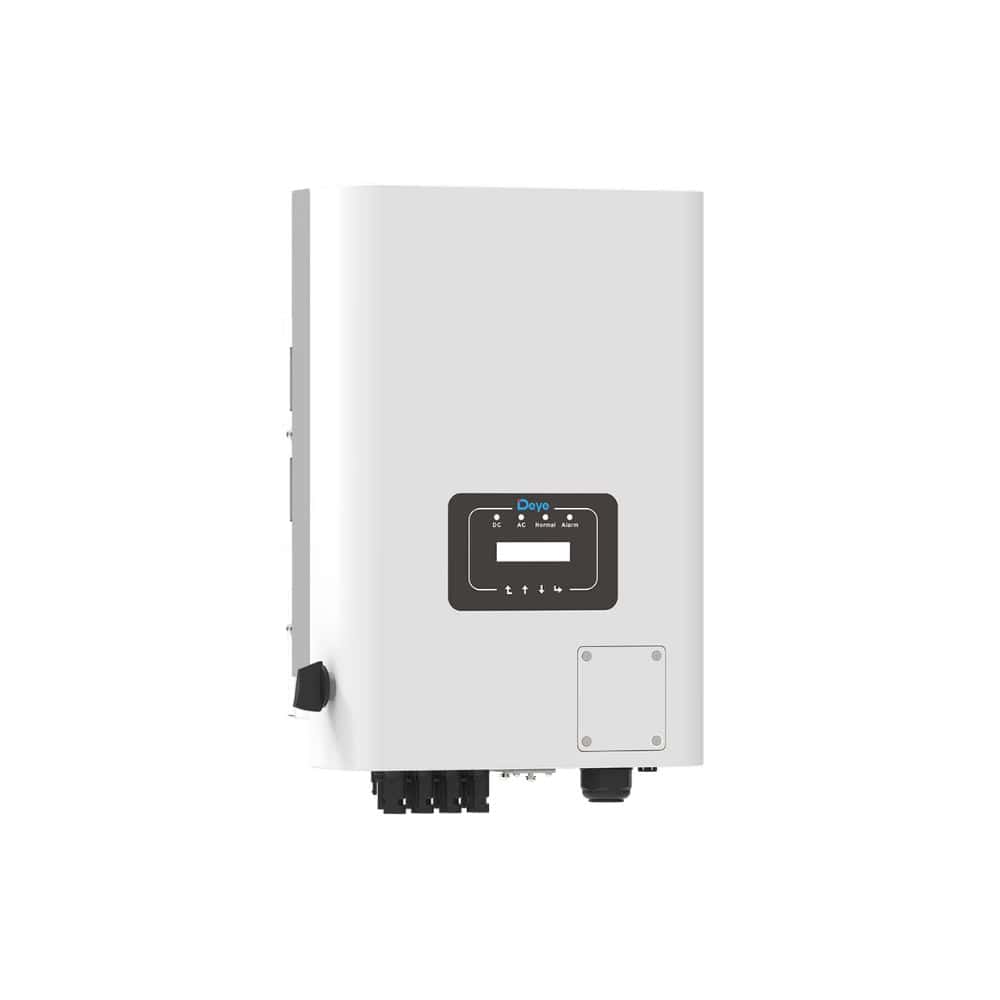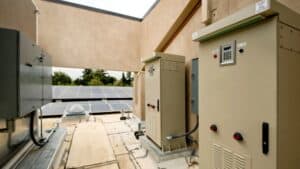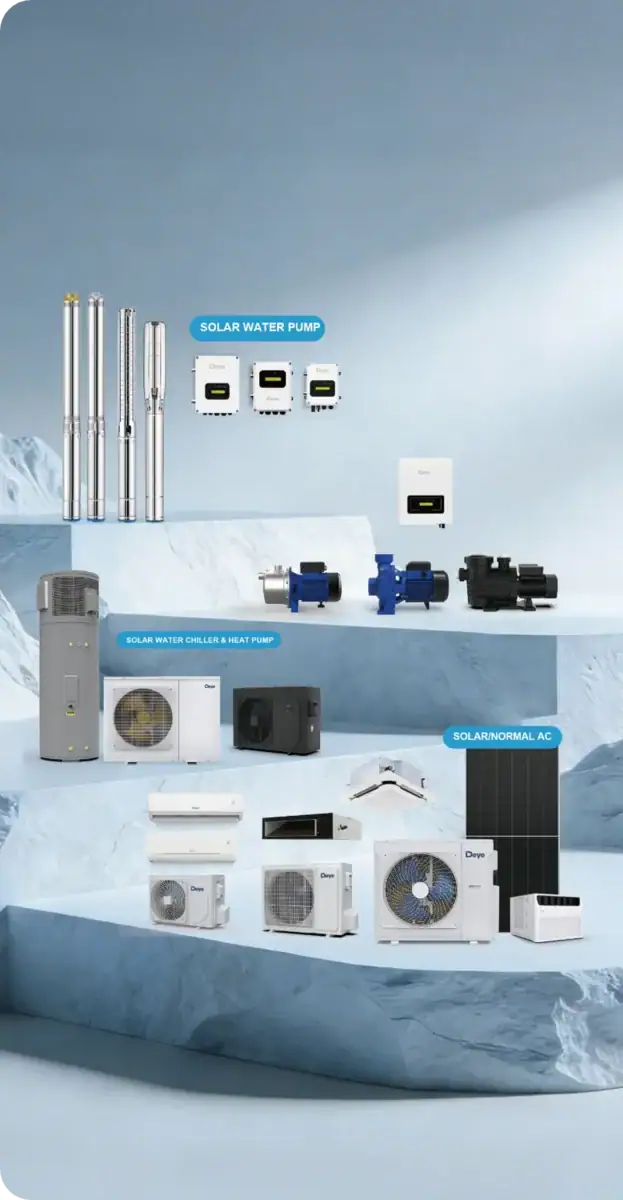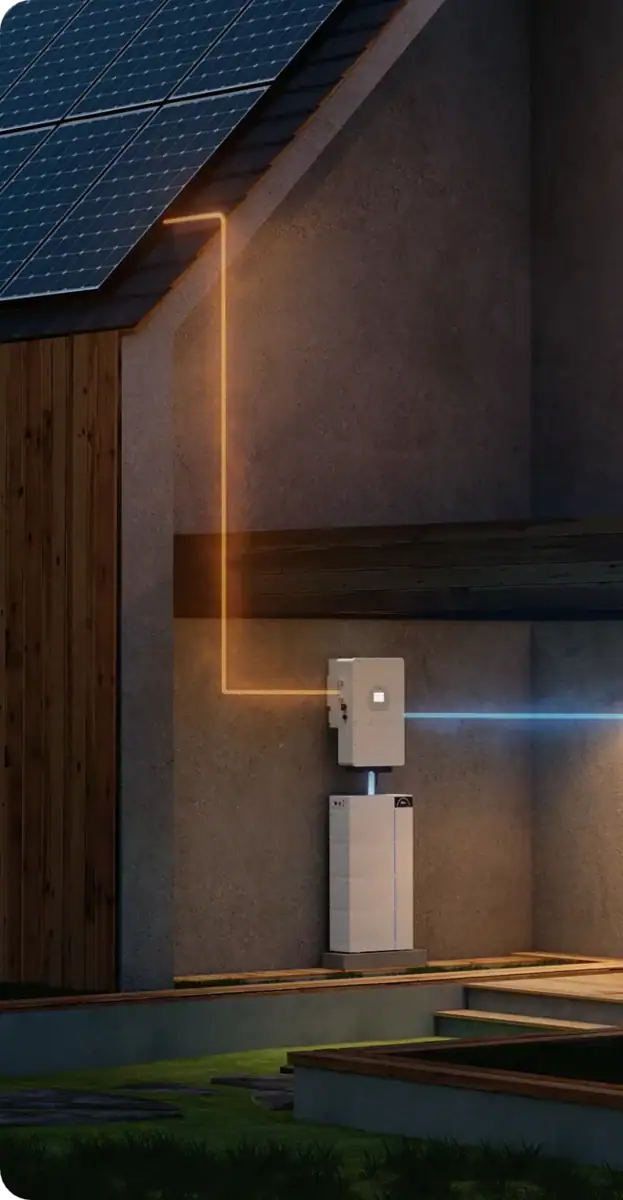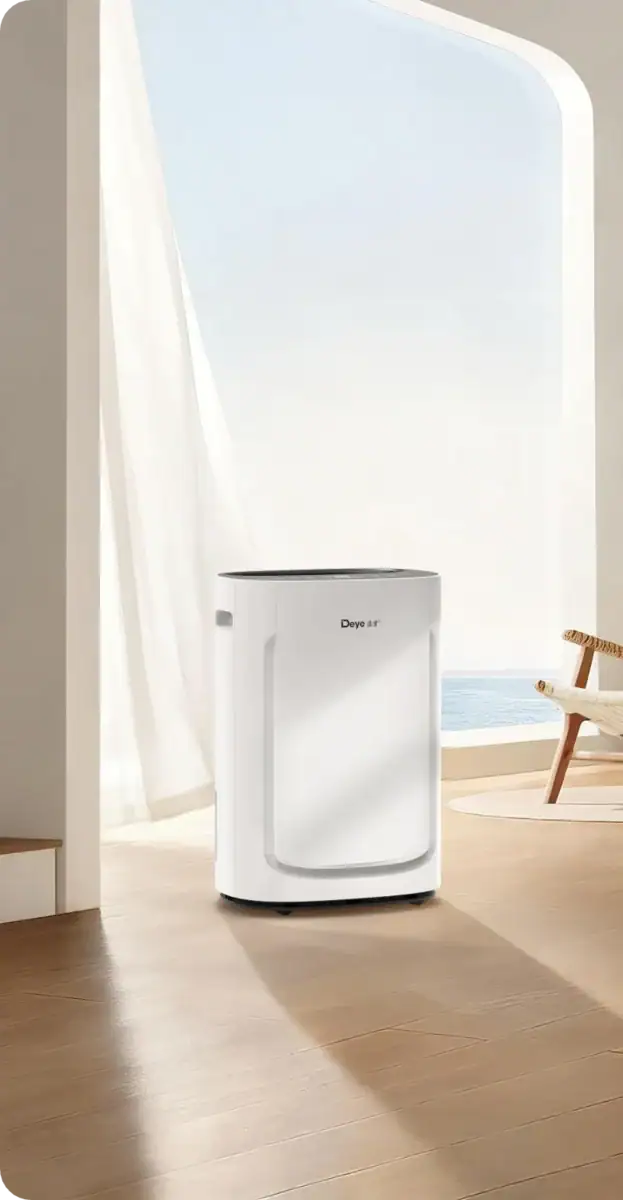“A grid-interactive inverter is the brain of a solar power system. It converts power from your solar panels into electricity your home can use. This device also connects your home to the main utility grid. When you produce extra solar power, the inverter sends it to the grid, which can lower your bills. When you need more electricity, it pulls power from the grid. Many of these inverters can also provide backup power if there is an outage.”
Discover how a grid-interactive inverter can lower your electricity bills, provide backup power, and make your home more environmentally friendly. Learn how they work, their key benefits, and what to consider before you buy.
How a Grid-Interactive Inverter Works: The Two-Way Street of Power
At its core, a grid-interactive inverter manages a two-way flow of energy to ensure your home is powered as efficiently as possible. Here’s how it works:
Core Function: DC to AC Conversion
First and foremost, the inverter has a primary job: converting electricity.
Solar panels naturally produce Direct Current (DC) electricity, but the appliances in your home and the electricity from the utility company run on Alternating Current (AC). The inverter’s most fundamental task is to convert the raw DC power from your panels into usable AC power for your home.
Connecting to the Grid
This is where the “grid-interactive” part comes in. The inverter creates a seamless connection between your home’s solar panel system and the public utility grid.
- Sending Power Out: On a sunny day, your solar panels might produce more electricity than your home is using. When this happens, the inverter intelligently directs that excess power out of your home and onto the utility grid. In many areas, the utility company will credit you for this power, a process known as net metering, which can further lower your electricity bills.
- Bringing Power In: When your energy needs exceed what your solar panels are producing, such as on a cloudy day or at night, the inverter automatically pulls the electricity you need from the grid. This process is seamless, ensuring you always have a reliable supply of power without any interruptions.
Key Features and Advanced Capabilities
Modern grid-interactive inverters are more than simple converters; they are packed with advanced features that provide greater control, efficiency, and reliability.
Flexible Power Management
- Load Adjustment: A smart inverter can intelligently manage your home’s electrical load. It can prioritize where power goes, ensuring your most critical appliances always have the energy they need while optimizing overall consumption.
- “Island Mode”: This is one of the most valuable features. “Islanding” is the inverter’s ability to disconnect from the grid during a power outage and function independently. When the grid goes down, the inverter creates its own mini-grid, using your solar panels and a connected battery bank to keep your essential appliances running. This provides invaluable backup power, whether you live in an area with frequent blackouts or in a rural, off-grid setting.
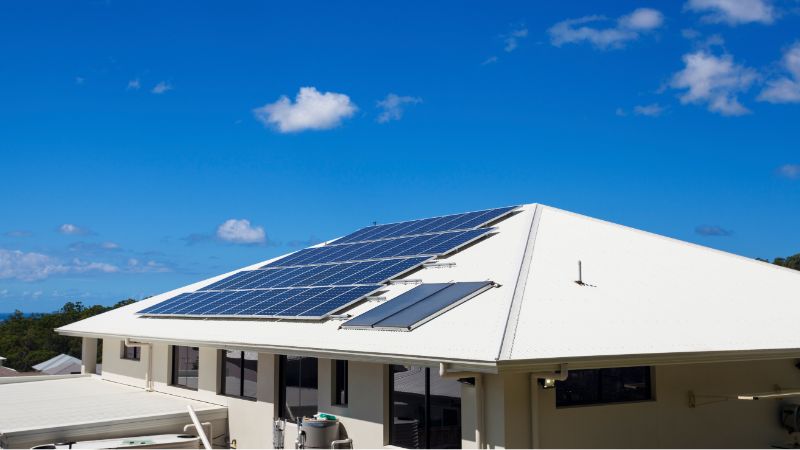
Efficient and Lightweight Design
Early inverters were often bulky and inefficient due to the need for large, heavy transformers. Today’s grid-interactive models are different. They often use advanced electronics instead of a traditional transformer, making them more lightweight, compact, and cost-effective without sacrificing performance.
Smart Response System
These inverters are designed to be adaptable. They can instantly respond to changing conditions, such as disturbances on the utility grid or fluctuations in power coming from your solar panels. This ensures the power delivered to your home is stable and reliable.
Some advanced models can also manage both real power (the energy that does the work) and reactive power (energy that supports the grid), helping to improve the overall stability of the utility grid itself.
The Major Benefits: Why Invest in a Grid-Interactive Inverter?
Investing in a grid-interactive inverter can improve your finances, reduce your environmental footprint, and enhance your energy security.
Financial Advantages
- Lower Electricity Bills: This is often the most immediate and appealing benefit. By generating and using your own solar power, you dramatically reduce your dependence on electricity from the utility company. Every kilowatt-hour of energy your solar panels produce is one you don’t have to buy, leading to substantial savings on your monthly bills.
- Affordable Solar Production: A grid-interactive inverter is the key that makes a home solar or wind power system financially viable. By maximizing the use of the renewable energy you generate and enabling you to sell excess power back to the grid, the inverter helps you get the most out of your investment, shortening the payback period for your entire system.
Environmental Impact
- A Greener Home: For homeowners looking to live more sustainably, this technology is essential. A grid-interactive inverter is a critical component for creating an environmentally friendly household. It allows you to power your life with clean, renewable energy, significantly reducing your home’s carbon footprint.
- Supports Renewable Energy: By installing a grid-interactive system, you become a part of the larger movement toward clean energy. Your system contributes to the overall supply of renewable energy, supporting the transition away from fossil fuels and promoting a healthier planet.
Energy Reliability and Security
- Backup Power Source: A grid-interactive inverter system means a reliable backup power source. During grid failures, your inverter can keep essential appliances—like refrigerators, lights, and medical equipment—running, ensuring your family’s comfort and safety.
- Grid Support: When your system sends its excess clean energy back to the grid, it does more than just earn you credits. It helps create a more resilient and stable utility system for your entire community. This distributed generation makes the grid less reliant on large, centralized power plants.
What to Consider Before Choosing an Inverter
Once you’ve decided a grid-interactive inverter is for you, there are a few important factors to consider to ensure you choose the right one for your home.
Cost and Sizing
The most critical factor is proper sizing. The inverter must be correctly matched to the size of your solar panel array and your home’s expected electricity usage. An undersized inverter won’t be able to handle all the power your panels produce, while an oversized one will be inefficient and unnecessarily expensive.
Grid-Connected vs. Off-Grid Needs
Think carefully about your primary goal. Do you want a system that supplements your grid connection to save money, with backup power as a secondary benefit? Or do you require a fully off-grid solution that can operate independently for extended periods? Your answer will determine the type of inverter and battery storage you need.
Safety and Compliance Standards
- UL-Listing: Safety should always be a top priority. It is crucial to choose an inverter that is UL-listed (certified by Underwriters Laboratories). This certification ensures the product has been rigorously tested for safety and performance and meets established industry standards.
- Utility Requirements: Your local utility company will have its own set of safety requirements. A key one is “anti-islanding protection,” which automatically shuts down the inverter if the grid fails. This is a critical safety measure that prevents your system from sending power onto the grid while utility crews are working on the lines.
A Smart Choice: Deye Inverters
For a reliable and efficient inverter, consider Deye – a global leader in inverter technology and offer great options for homeowners.
- To Lower Your Bills: The Deye Single-Phase String Inverters are perfect for maximizing your solar energy use. They are highly efficient and help you use your own power first, cutting down your reliance on the grid.
- For Backup Power: If you want to keep your home running during a power outage, the Deye Hybrid Inverters are a fantastic choice. They can store energy from solar panels or a generator, providing a reliable backup power source. They also offer great flexibility for managing your energy.
Choosing a Deye inverter is a solid investment in your home’s energy future.
Conclusion: Is a Grid-Interactive Inverter Right for You?
So, is a grid-interactive inverter the right choice for your home? If you’re looking to take control of your energy future, the answer is likely yes.
By converting solar energy into usable AC power, managing a two-way flow of electricity with the grid, and providing invaluable backup power, these devices offer a powerful combination of benefits. They empower you to significantly lower your energy costs, reduce your environmental impact, and gain true energy independence and peace of mind.
Ultimately, a grid-interactive inverter is a smart, long-term investment for any homeowner. It’s a commitment to a more sustainable, affordable, and reliable energy future.
Ready to take the next step? We encourage you to consult with our professionals. We can assess your property, discuss your specific needs, and help you design the perfect system for your home.

